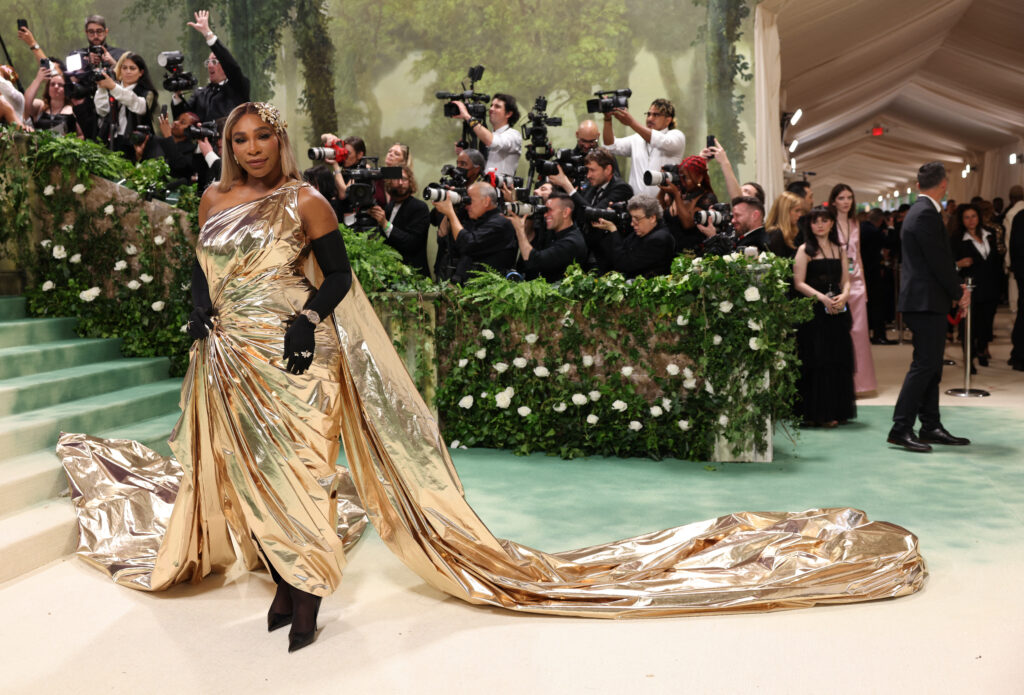- Web Desk
- Aug 13, 2025

Red Carpet’s Evolving Role in Fashion
-
- Syeda Noor ul ain
- May 14, 2024

As the Met Gala unfolded last week and the fashion frenzy swept through the season, we watched with awe as actors strutted down the red carpet in their most exquisite attire, each adorned with flawless makeup, impeccably styled hair, and couture garments radiating charm and elegance.
But amidst the post-Gala chatter about who stole the show and who missed the mark, we often forget the dedicated hands behind the scenes. We’re quick to gush over Zendaya’s breath-taking gown, J. LO’s stunning creation, and Cardi B’s unforgettable ensemble, yet we rarely pause to acknowledge the designers who poured their creativity into these works of art.
Behind the scenes, in bustling fashion capitals like New York, Milan, and Paris, there’s a flurry of activity as designers and artisans meticulously craft these masterpieces. They pour their hearts and souls into each stitch and bead, hoping to make a mark in an industry that’s as fickle as it is glamorous.

During red carpet season, it’s easy to get caught up in the whirlwind of excitement as outfits parade past like delicious treats on a conveyor belt. We devour each look eagerly, but often fail to savour the craftsmanship and artistry behind them. Even the most exquisite gown can lose its magic in the frenzy of the moment, as the clamour of “Who are you wearing?” muffles the voices of the designers themselves.
In the early days of red carpet culture, dressing a celebrity was a sure-fire way for designers to catapult into the limelight. A single appearance at the Oscars or the Met Gala could transform a designer’s career overnight, propelling them into the realm of fashion royalty.

But today, the landscape has shifted. With the rise of social media and reality TV, designers no longer rely solely on celebrity endorsements to make a name for themselves. They’ve carved out their own platforms, where they can showcase their talents and connect directly with their audience, bypassing the need for A-list validation.
While it’s still a thrill for designers to see their creations adorning the likes of Julianne Moore or Zendaya, the relationship between celebrities and fashion has evolved. Celebrities now use fashion as a tool to shape their personal brand and cultivate their image on social media, while designers continue to push the boundaries of creativity and innovation, independent of star power.
Yet, amidst the glitz and glamour of the red carpet, there’s a quieter story unfolding. It’s the story of the smaller design houses and emerging talents who struggle to compete in an industry dominated by big names and high stakes. It’s the story of young designers who pour their hearts and savings into creating one-of-a-kind gowns, hoping for that one moment of recognition that could change their lives forever.

However, the evolution of the fashion industry goes beyond just the relationship between designers and celebrities. The democratization of fashion through social media has given rise to a new breed of influencers and tastemakers, who wield significant influence over consumer trends and brand perceptions.
In this digital age, anyone with a smartphone and an eye for style can become a fashion authority, reshaping the landscape of the industry. Bloggers, YouTubers, and Instagram influencers have emerged as powerful voices, often rivalling the traditional gatekeepers of fashion journalism and celebrity endorsements.
This democratization of fashion has not only democratized access to style but has also democratized the pathway to success for aspiring designers. Platforms like Instagram and TikTok provide a direct line of communication between designers and their audience, allowing them to bypass traditional gatekeepers and build their own communities of loyal followers.
Furthermore, the rise of online shopping and direct-to-consumer brands has disrupted the traditional retail model, empowering designers to sell their creations directly to consumers without the need for costly intermediaries. This direct relationship between designers and consumers not only allows for greater creative freedom but also fosters a sense of authenticity and transparency that resonates with today’s socially conscious consumers.

In this brave new world of fashion, the red carpet remains a symbol of glamour and prestige, but its significance has evolved in tandem with the changing dynamics of the industry. While celebrities still hold sway over the public imagination, they are no longer the sole arbiters of style and influence. Instead, they exist within a broader ecosystem of voices and perspectives, where designers, influencers, and consumers all play a role in shaping the future of fashion.
In conclusion, the evolution of red carpet culture reflects the broader transformations taking place within the fashion industry. As designers adapt to new technologies and modes of communication, the traditional hierarchy of celebrity endorsement is giving way to a more inclusive and democratic vision of fashion, where creativity, authenticity, and community are the true currencies of success. And while the spotlight may shine brightest on the stars, let’s not forget the unsung heroes behind the scenes who bring the magic to life.






